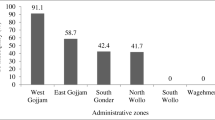Abstract
Among the 41 soil elements analyzed from 4856 sites across the contiguous 48 states, average Parkinson’s disease (PD) mortality rates between 1999 and 2014 have the most significant positive correlation with the average soil strontium (Sr) concentrations (correlation r = 0.47, significance level p = 0.00), and average PD mortality rates have the most significant inverse correlation with the average soil selenium (Se) concentrations (r = −0.44, p = 0.00). Multivariate regression models indicate that soil Sr and Se concentrations can explain 35.4% of spatial disparities of the state average PD mortality rates between 1999 and 2014 (R 2 = 0.354). When the five outlier states were removed from the model, concentrations of soil Sr and Se can explain 62.4% (R 2 = 0.624) of the spatial disparities of PD mortality rates of the 43 remaining states. The results also indicate that high soil magnesium (Mg) concentrations suppressed the growth rate of the PD mortality rates between 1999 and 2014 in the 48 states (r = −0.42, p = 0.000). While both Se and Sr have been reported to affect the nervous system, this study is the first study that reported the statistically significant association between the PD mortality rates and soil concentrations of Se, Sr, and Mg in the 48 states. Given that soil elemental concentration in a region is broad indicator of the trace element intake from food, water, and air by people, implications of the results are that high soil Se and Mg concentrations helped reduce the PD mortality rates and benefited the PD patients in the 48 states.


Similar content being viewed by others
References
Abrahams, P. W. (2002). Soils: Their implications to human health. Science of the Total Environment, 291, 1–32.
Anderson, R. N., & Rosenberg, H. M. (1998). Age standardization of death rates: Implementation of the year 2000 standard. National Vital Statistics Reports, 47, 1–17.
Archer, V. E., Wagoner, J. K., & Lundin, F. E. (1973). Lung cancer among uranium miners in the United States. Health Physics, 25, 351–371.
Barrett, J. R. (2010). An uneven path forward: The history of methylmercury toxicity research. Environmental Health Perspectives, 118, A352.
Bellou, V., Belbasis, L., Tzoulaki, I., Evangelou, E., & Ioannidis, J. P. (2016). Environmental risk factors and Parkinson’s disease: An umbrella review of meta-analyses. Parkinsonism & Related Disorders, 23, 1–9.
Boffetta, P., Garcia-Gómez, M., Pompe-Kirn, V., Zaridze, D., Bellander, T., Bulbulyan, M., et al. (1998). Cancer occurrence among European mercury miners. Cancer Causes and Control, 9, 591–599.
Bondy, S. C. (2016). Low levels of aluminum can lead to behavioral and morphological changes associated with Alzheimer’s disease and age-related neurodegeneration. NeuroToxicology, 52, 222–229.
Brady, N. C., & Weil, R. R. (2007). The nature and properties of soils (15th ed.). New York City, New York: Pearson Education.
Cardoso, B. R., Roberts, B. R., Bush, A. I., & Hare, D. J. (2015). Selenium, selenoproteins and neurodegenerative diseases. Metallomics, 7, 1213–1228.
Chen, J., & Berry, M. J. (2003). Selenium and selenoproteins in the brain and brain diseases. Journal of Neurochemistry, 86, 1–12.
Christine, C. W., & Aminoff, M. J. (2004). Clinical differentiation of parkinsonian syndromes: Prognostic and therapeutic relevance. American Journal of Medicine, 117, 412–419.
Cordeiro, J. M., Goncalves, P. P., & Dunant, Y. (2011). Synaptic vesicles control the time course of neurotransmitter secretion via a Ca2+/H+ antiport. Journal of Physiology, 589, 149–167.
De Lau, L. M., & Breteler, M. M. (2006). Epidemiology of Parkinson’s disease. Lancet Neurology, 5, 525–535.
DHHS. (2001). Draft report: A feasibility study of the health consequences to the American population from nuclear weapons tests conducted by the United States and other nations. USDHHS, CDC and NCI. I and II. Accessible at http://www.cdc.gov/nceh/radiation/fallout/default.htm.
Dick, F. D., De Palma, G., Ahmadi, A., Scott, N. W., Prescott, G. J., Bennett, J., et al. (2007). Environmental risk factors for Parkinson’s disease and Parkinsonism: The Geoparkinson study. Occupational and Environmental Medicine, 64, 666–672.
Elbaz, A., & Tranchant, C. (2007). Epidemiologic studies of environmental exposures in Parkinson’s disease. Journal of the Neurological Sciences, 262, 37–44.
Gorell, J. M., Johnson, C. C., Rybicki, B. A., Peterson, E. L., Kortsha, G. X., Brown, G. G., et al. (1999). Occupational exposure to manganese, copper, lead, iron, mercury and zinc and the risk of Parkinson’s disease. Neurotoxicology, 20, 239–247.
Hashimoto, T., Nishi, K., Nagasao, J., Tsuji, S., & Oyanagi, K. (2008). Magnesium exerts both preventive and ameliorating effects in an in vitro rat Parkinson disease model involving 1-methyl-4-phenylpyridinium (MPP +) toxicity in dopaminergic neurons. Brain Research, 1197, 143–151.
Inamdar, A. A., Hossain, M. M., Bernstein, A. I., Miller, G. W., Richardson, J. R., & Bennett, J. W. (2013). Fungal-derived semiochemical 1-octen-3-ol disrupts dopamine packaging and causes neurodegeneration. PNAS, 110, 19561–19566.
Kabata-Pendias, A., & Mukherjee, A. B. (2007). Trace elements from soil to human. New York: Springer Science & Business Media.
Kenneth, D., Kochanek, M. A., Murphy, S. L., & Xu, J. (2013). Deaths: Final data for 2011. National Vital Statistics System, 63, 1–120.
Kieburtz, K., & Wunderle, K. B. (2013). Parkinson’s disease: Evidence for environmental risk factors. Movement Disorders, 28, 8–13.
Lai, B. C. L., Marion, S. A., Teschke, K., & Tsui, J. K. C. (2002). Occupational and environmental risk factors for Parkinson’s disease. Parkinsonism & Related Disorders, 8, 297–309.
McCormack, A. L., Thiruchelvam, M., Manning-Bog, A. B., Thiffault, C., Langston, J. W., Cory-Slechta, D. A., et al. (2002). Environmental risk factors and Parkinson’s disease: Selective degeneration of nigral dopaminergic neurons caused by the herbicide paraquat. Neurobiology of Diseases, 10, 119–127.
Oliver, M. A. (1997). Soil and human health: A review. European Journal of Soil Science, 48, 573–592.
Oyanagi, K. (2005). The nature of the parkinsonism-dementia complex and amyotrophic lateral sclerosis of Guam and magnesium deficiency. Parkinsonism & Related Disorders, 11, S17–S23.
Prashanth, L., Kattapagari, K. K., Chitturi, R. T., Baddam, V. R. R., & Prasad, L. K. (2015). A review on role of essential trace elements in health and disease. Journal of Dr. NTR University of Health Sciences, 4, 75–85.
Priyadarshi, A., Khuder, S. A., Schaub, E. A., & Priyadarshi, S. S. (2001). Environmental risk factors and Parkinson’s disease: A metaanalysis. Environmental Research, 86, 122–127.
Purdey, M. (2004). Chronic barium intoxication disrupts sulphated proteoglycan synthesis: A hypothesis for the origins of multiple sclerosis. Medical Hypotheses, 62, 746–754.
Qureshi, G. A., Qureshi, A. A., Memon, S. A., & Parvez, S. H. (2006). Impact of selenium, iron, copper and zinc in on/off Parkinson’s patients on L-dopa therapy. Journal of Neural Transmission Supplementum, 71, 229–236.
Shindo, Y., Yamanaka, R., Suzuki, K., Hotta, K., & Oka, K. (2016). Altered expression of Mg(2+) transport proteins during Parkinson’s disease-like dopaminergic cell degeneration in PC12 cells. Biochimica et Biophysica Acta, 1863, 1979–1984.
Shindoa, Y., Yamanakaa, R., Suzukib, K., Hottaa, K., & Okaa, K. (2015). Intracellular magnesium level determines cell viability in the MPP+ model of Parkinson’s disease. Biochimica et Biophysica Acta, 1853, 3182–3191.
Simon, S. L., Bouville, A., & Beck, H. L. (2004). The geographic distribution of radionuclide deposition across the continental US from atmospheric nuclear testing. Journal of Environmental Radioactivity, 74, 91–105.
Smith, D. B., Cannon, W. F., Woodruff, L. G., Federico, S., & Ellefsen, K. J. (2014). Geochemical and mineralogical maps for soils of the contiguous United States: U.S. Geological Survey Open-File Report 2014–1082. Accessible at http://pubs.usgs.gov/ds/801/.
Steinbrenner, H., Speckmann, B., & Klotz, L. O. (2016). Selenoproteins: Antioxidant selenoenzymes and beyond. Archives of Biochemistry and Biophysics, 595, 113–119.
Taniguchi, R., Nakagawasai, O., Tan-no, K., Yamadera, F., Nemoto, W., Sato, S., et al. (2013). Combined low calcium and lack magnesium is a risk factor for motor deficit in mice. Bioscience, Biotechnology, and Biochemistry, 77, 266–270.
Weisskopf, M. G., Weuve, J., Nie, H., Saint-Hilaire, M. H., Sudarsky, L., & Simon, D. K. (2010). Association of cumulative lead exposure with Parkinson’s disease. Environmental Health Perspectives, 118, 1609–1613.
Wiener, J. G., Krabbenhoft, D. P., Heinz, G. H., & Scheuhammer, A. M. (2003). Ecotoxicology of mercury, Chapter 16. In D. J. Hoffman, B. A. Rattner, G. A. Burton Jr., & J. Cairns Jr. (Eds.), Handbook of ecotoxicology (2nd ed., pp. 409–463). Boca Raton, Florida: CRC Press.
Willis, A. W., Evanoff, B. A., Lian, M., Galarza, A., Wegrzyn, A., Schootman, M., et al. (2010). Metal emissions and urban incident Parkinson disease: A community health study of Medicare beneficiaries by using geographic information systems. American Journal of Epidemiology, 172, 1357–1363.
Wirdefeldt, K., Adami, H. O., Cole, P., Trichopoulos, D., & Mandel, J. (2011). Epidemiology and etiology of Parkinson’s disease: A review of the evidence. European Journal of Epidemiology, 26, S1–S58.
Xu, J., Murphy, S. L., Kochanek, K. D., Bastian, B. A. (2016). Deaths: final data for 2013. National Vital Statistics System, 64(2).
Zafar, K. S., Siddiqui, A., Sayeed, I., Ahmad, M., Salim, S., & Islam, F. (2003). Dose-dependent protective effect of selenium in rat model of Parkinson’s disease: Neurobehavioral and neurochemical evidences. Journal of Neurochemistry, 84, 438–446.
Zhang, S., Rocourt, C., & Cheng, W. H. (2010). Selenoproteins and the aging brain. Mechanisms of Ageing and Development, 131, 253–260.
Acknowledgements
The author wishes to thank the two anonymous reviewers for their critical comments which helped improve this manuscript significantly. Editorial assistance of Michael Sun from Johns Hopkins University is appreciated as well.
Author information
Authors and Affiliations
Corresponding author
Rights and permissions
About this article
Cite this article
Sun, H. Association of soil selenium, strontium, and magnesium concentrations with Parkinson’s disease mortality rates in the USA. Environ Geochem Health 40, 349–357 (2018). https://doi.org/10.1007/s10653-017-9915-8
Received:
Accepted:
Published:
Issue Date:
DOI: https://doi.org/10.1007/s10653-017-9915-8




